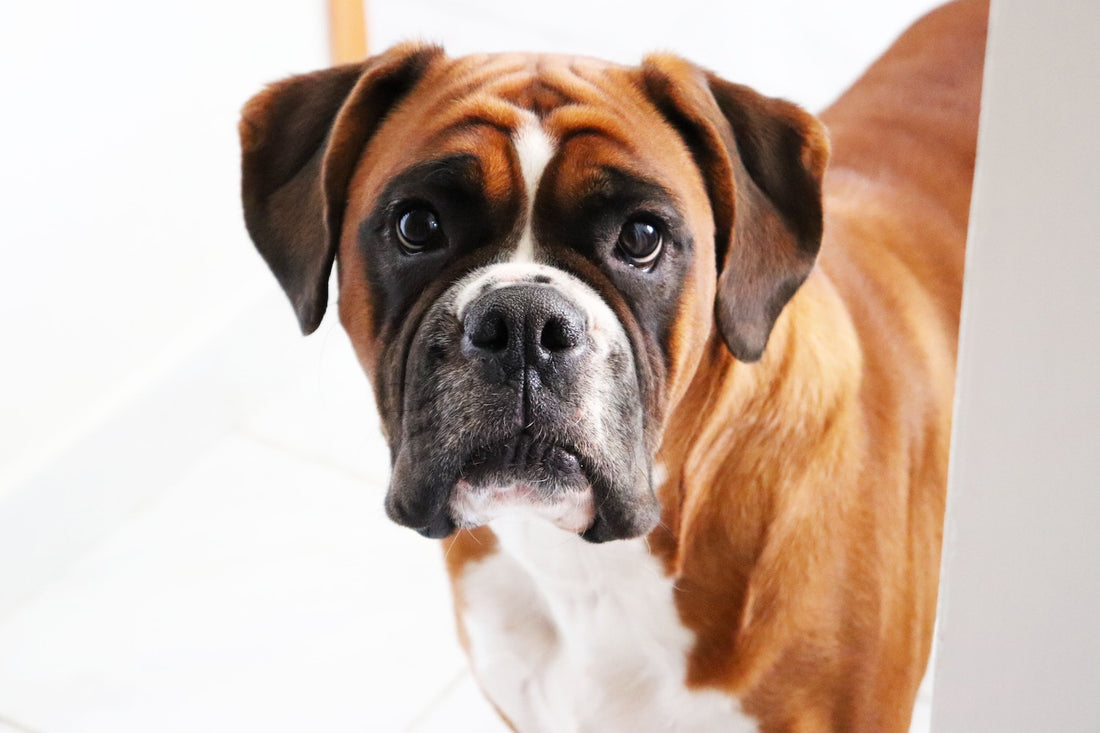
What Is Degenerative Myelopathy (DM)?
Pet owners researching information for their senior dogs may at some time or another happen upon the condition known as degenerative myelopathy — aka DM — and quickly scroll past this anxiety-inducing disease.
It’s a condition often compared to ALS (amyotrophic lateral sclerosis or Lou Gehrig’s disease) in people.
“It is a terrible disease,” said canine physical therapist Carrie Adrian. “Currently, there is no effective cure or treatment to slow the progression of DM.”
But as pet owners, we decide to educate ourselves to help serve our pets’ needs as best we can — even if it causes a sleepless night or two. And the more we learn, the better we can get at finding the best route to keep our pets in optimal shape.
In the case of DM, the condition may not be as widely discussed as other more well-known diseases that affect dogs’ movement.
“When I was first in general practice, I think it was kind of under the radar,” said veterinarian Dr. Paul Brumett, of Animal Tracks Rehabilitation and Fitness in Colorado. “I don't know that it got talked about a lot and it wasn't until … I started working in rehab that it kind of came to the forefront.”
Adrian said DM is a disease of the spinal cord that is progressive by nature with onset usually occurring in older dogs after age 8. She said that most of her clients report a gradual onset, starting with incoordination in the hind limbs and scuffing of the toes.
“It can occur in one hindlimb or both and progresses over a variable length of time, usually within six months to one year,” she said. “It is a painless process, but the limbs continue to weaken to a point where the dog has difficulty standing and walking, to eventually becoming non-ambulatory (unable to walk).”
Dogs may eventually lose bowel and bladder control, and weakness can develop in the front limbs. Common breeds affected are German shepherds, corgis and boxers, but many other breeds can be affected as well. Some other signs and symptoms can include knuckling of the hind paws and/or abnormal toe nail scrapings, wobbliness, difficulty with turns, poor hindlimb coordination and clumsiness, partial paralysis and hindlimb weakness, increasing loss of range of motion and significant muscle atrophy.
Diagnosis isn’t simple either. According to Adrian, DM is generally diagnosed by ruling out other diseases.
“The neurologist performs an exam and eliminates other possible disease processes, such as IVDD (intervertebral disc disease), infection, tumors, etc.,” she said. “Diagnostically, an MRI may also be performed to rule out these other causes of the hindlimb weakness. If all are negative, DM is usually suspect.”
She said there is a new blood test that can be performed to identify a newly identified gene for DM. Test results come back with one of three results:
Normal: The dog is not a carrier for the mutation known to cause DM.
Carrier: The dog is a carrier for the mutation known to cause DM, but is less likely to develop clinical symptoms.
Affected — at risk: The dog is a carrier of the DM gene and is at risk for developing clinical signs.
But the reality is that there is currently no definitive diagnostic tool for DM.
“The only way to truly diagnose this disease is after the dog is deceased and a necropsy is performed, evaluating the spinal cord under the microscope,” she said.
So what’s the good news? While DM is truly devastating, there is some hope.
According to Brumett, laser therapy has shown some early promise as possible treatment.
“Nitrous oxide in the right place, it's a good chemical,” he said. “When it's in the wrong place in the body, it's a bad chemical. There's a laser actually [that] helps reduce the bad nitrous oxide along the spinal cord … where we typically see the most problems with degenerative myelopathy.”
He said there’s a veterinarian specializing in DM therapies that has used a protocol including feeding a healthy, fresh food diet, using Chinese herbs and physical rehab.
“And what he's finding is the dogs are really kind of pushing the envelope on how [long] they can live,” he said.
Adrian said that the assistive device, the WiggleLess Back Brace, is proving to be an excellent short-term solution for instability and weakness early on in the disease. Watch a video of her DM patient here.
“A standard mantra that we physical therapists learn early on in physical therapy school is ‘proximal stability for peripheral mobility,’” she said. “In other words, if we can control the incoordination, or ‘wobbliness’ at the trunk, movement becomes easier and more coordinated in the limbs.”
She said that balancing exercise in dogs with DM is important and shouldn’t be overdone.
“I don’t look at DM as a true loss of ‘strength,’” said Adrian. “Think of it more as a ‘disconnect’ between nerve and muscle. So, how are you going to strengthen a connection that is no longer there? That said, activity must match progression of the disease. As with any neurologic disease, fatigue sets in quickly. And if overdone, it may be hard to regain that level again, especially in dogs with DM. Provide support.”
She said harnesses and carts may also be useful as the disease progresses, as well as modifications in the home — including elevating bowls, removing obstacles and blocking stairs for safety. She said massaging around the joints to increase circulation and help prevent pressure sores is also a good idea.
“Go to the point of fatigue, but not beyond,” she said. “Even if that’s only a few minutes. … Get up and get moving and let them be a dog, but with modified activity — to their ability, and especially as the disease progresses.”
https://youtu.be/KQbw18jHDXY
(Photo by Lucie Helešicová on Unsplash)
